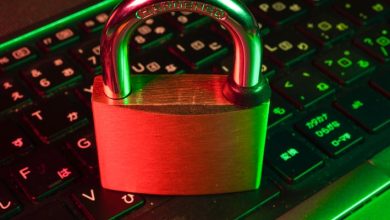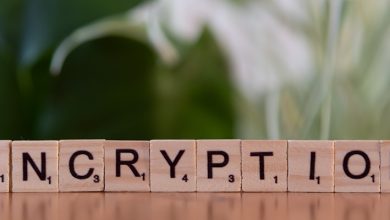The Importance of Two-Factor Authentication

- The Basics of Two-Factor Authentication
- Enhancing Security with Two-Factor Authentication
- Why Two-Factor Authentication is Essential
- Common Misconceptions About Two-Factor Authentication
- Implementing Two-Factor Authentication in Your Daily Life
- The Future of Two-Factor Authentication Technology
The Basics of Two-Factor Authentication
Two-factor authentication (2FA) is a security process that requires users to provide two different authentication factors to verify their identity. This adds an extra layer of security beyond just a password, making it more difficult for unauthorized users to access accounts or sensitive information.
One common example of 2FA is when a user enters their password (first factor) and then receives a one-time code on their phone (second factor) that they must enter to complete the login process. This ensures that even if a hacker manages to obtain a user’s password, they would still need access to the second factor to gain entry.
By implementing 2FA, organizations can significantly reduce the risk of unauthorized access to their systems and data. It is an effective way to protect against various cyber threats, such as phishing attacks, credential stuffing, and brute force attacks.
Overall, the basics of two-factor authentication are simple yet crucial for enhancing security measures. It is a highly recommended practice for individuals and businesses looking to safeguard their online accounts and sensitive information from potential security breaches.
Enhancing Security with Two-Factor Authentication
Implementing two-factor authentication (2FA) is a crucial step in enhancing the security of your online accounts. By requiring users to provide two different authentication factors, such as a password and a unique code sent to their mobile device, 2FA adds an extra layer of protection against unauthorized access.
One of the key benefits of 2FA is that even if a hacker manages to obtain a user’s password, they would still need the second factor to gain access to the account. This significantly reduces the risk of a security breach and helps safeguard sensitive information.
Furthermore, 2FA can help prevent various types of cyber attacks, including phishing and brute force attacks. With an additional authentication step, it becomes much harder for malicious actors to compromise accounts and steal personal data.
Overall, incorporating two-factor authentication into your security strategy is a simple yet effective way to bolster the protection of your online accounts. By requiring multiple factors to verify a user’s identity, 2FA significantly reduces the risk of unauthorized access and enhances overall security.
Why Two-Factor Authentication is Essential
Implementing two-factor authentication is crucial in today’s digital landscape to enhance security measures and protect sensitive information. This method adds an extra layer of security beyond just a password, making it significantly more difficult for unauthorized users to gain access to accounts or systems.
By requiring users to provide two different forms of identification, such as a password and a unique code sent to their mobile device, two-factor authentication significantly reduces the risk of unauthorized access. This additional step helps prevent potential security breaches, data leaks, and identity theft.
With the increasing number of cyber threats and hacking attempts, relying solely on passwords is no longer sufficient to safeguard valuable data. Two-factor authentication provides an added level of protection that can help prevent unauthorized access even if passwords are compromised.
Furthermore, two-factor authentication is easy to set up and use, making it a convenient security measure for individuals and organizations alike. By enabling this feature, users can enjoy peace of mind knowing that their accounts and information are better protected from cyber threats.
Common Misconceptions About Two-Factor Authentication
There are several common misconceptions about two-factor authentication that can lead to confusion and misinformation. One of the most prevalent myths is that 2FA is only necessary for high-profile individuals or businesses. In reality, two-factor authentication is beneficial for anyone who wants to enhance the security of their online accounts, regardless of their status or profession.
Another misconception is that two-factor authentication is too complicated or time-consuming to set up. While it may require an extra step to verify your identity, the added layer of security far outweighs any minor inconvenience. Setting up 2FA is a simple process that can be completed in just a few minutes, and the peace of mind it provides is invaluable.
Some people also believe that two-factor authentication is foolproof and can never be bypassed. While 2FA significantly reduces the risk of unauthorized access to your accounts, it is not immune to hacking attempts. It is essential to use strong, unique passwords in conjunction with two-factor authentication to maximize security.
Implementing Two-Factor Authentication in Your Daily Life
Implementing two-factor authentication in your daily routine is a crucial step towards enhancing the security of your online accounts. By adding an extra layer of protection beyond just a password, you can significantly reduce the risk of unauthorized access to your sensitive information.
One way to incorporate two-factor authentication into your daily life is by enabling it on all your important accounts, such as email, social media, and banking websites. This will ensure that even if your password is compromised, hackers will still need another form of verification to gain access.
Another tip is to use a reputable authenticator app on your smartphone to generate one-time codes for logging in. These apps are more secure than receiving codes via text message, as they are not susceptible to SIM swapping attacks.
Additionally, consider using biometric authentication methods, such as fingerprint or facial recognition, where available. These technologies provide an extra layer of security that is unique to you and difficult for hackers to replicate.
Overall, by making two-factor authentication a part of your daily routine, you can significantly reduce the likelihood of falling victim to cyber attacks and protect your valuable personal information.
The Future of Two-Factor Authentication Technology
As technology continues to advance, the future of two-factor authentication (2FA) is becoming increasingly sophisticated. One of the key developments in 2FA technology is the use of biometrics, such as fingerprint or facial recognition, to verify a user’s identity. This adds an extra layer of security by requiring something that the user is (biometric data) in addition to something they know (password).
Another trend in 2FA technology is the use of push notifications to a user’s mobile device. This method allows for real-time verification of a user’s identity, as they must physically approve the login attempt on their device. This not only enhances security but also provides a seamless user experience.
Furthermore, the future of 2FA may involve the use of hardware tokens or smart cards that generate one-time codes for authentication. These physical devices add an extra layer of security by requiring something the user has in addition to something they know.
Overall, the future of 2FA technology is moving towards more secure, convenient, and user-friendly methods of authentication. By incorporating biometrics, push notifications, and hardware tokens, organizations can better protect their sensitive data and ensure only authorized users have access to their systems.



